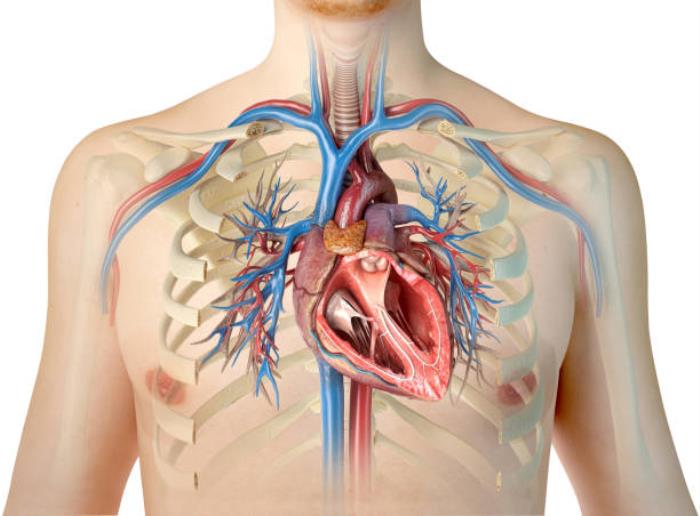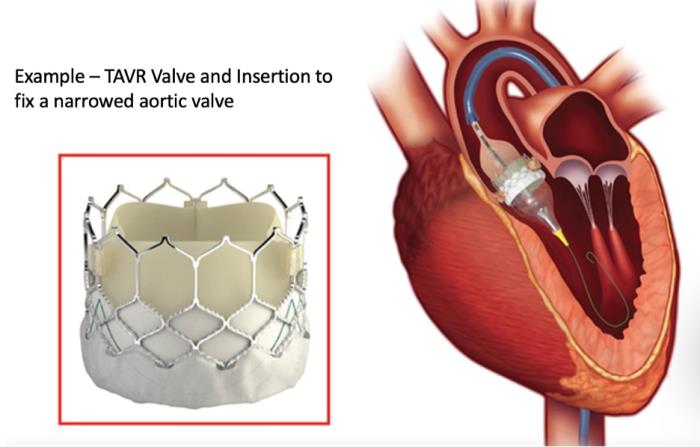Transcatheter Aortic Valve Replacement (TAVR) has revolutionized heart valve replacement by offering a minimally invasive alternative to traditional open-heart surgery. This procedure is especially beneficial for patients with severe aortic stenosis who are at high risk for open-heart surgery. By reducing the invasiveness, TAVR provides a safer, more efficient option with shorter recovery times and fewer complications, making it a transformative advancement in heart valve treatment.
What Is TAVR? An Overview of the Procedure
TAVR replaces a diseased aortic valve using a catheter-based approach rather than opening the chest. Performed through a small incision in the groin, a catheter is guided through blood vessels to the heart, where the new valve is expanded within the existing valve. This restores proper blood flow without the need for traditional open-heart surgery, offering a precise and less invasive solution for valve dysfunction.
TAVR vs. Traditional Open-Heart Surgery: Key Differences
The primary difference between TAVR and traditional open-heart surgery lies in the valve replacement approach. TAVR uses a catheter through a small incision, while open-heart surgery requires opening the chest. Traditional surgery typically involves a heart-lung machine to support circulation, which TAVR does not require. For patients, TAVR presents a less intensive option with reduced trauma, ideal for those unsuitable for open surgery.

Minimally Invasive Benefits: Why TAVR Is Less Invasive
TAVR’s minimally invasive nature is one of its greatest benefits. This technique minimizes large incisions, lowering infection risk and decreasing surgical trauma. Since TAVR doesn’t require opening the chest, patients experience less post-operative pain and faster return to daily activities. This benefit is crucial for older adults or individuals with other health issues, as it leads to fewer complications and quicker recovery.
Reduced Recovery Time with TAVR Compared to Open-Heart Surgery
Patients who undergo TAVR often recover faster than those with open-heart surgery. Due to its minimally invasive approach, patients may leave the hospital within days or even the next day, compared to the longer recovery needed for open-heart surgery. This shorter timeline allows for a quicker return to normal routines, making TAVR a preferred choice for those looking for a faster solution to aortic valve problems.
How TAVR Reduces Surgical Risks for High-Risk Patients
For patients at high risk due to age or other health conditions, TAVR offers a safer alternative to open-heart surgery. Traditional surgery may carry risks like infection, bleeding, or respiratory complications. TAVR minimizes these risks by reducing surgical trauma and eliminating the need for a heart-lung machine. For high-risk patients who may be ineligible for traditional surgery, TAVR provides a life-saving, effective solution for restoring heart function.
The Role of TAVR in Treating Severe Aortic Stenosis
Transcatheter Aortic Valve Replacement (TAVR) has revolutionized the treatment of severe aortic stenosis, especially for patients who may not be candidates for traditional open-heart surgery. As a minimally invasive procedure, TAVR involves implanting a new valve via a catheter, typically inserted through the femoral artery, making it a less intensive option than open surgery. This procedure helps restore normal blood flow, improving symptoms such as chest pain, shortness of breath, and fatigue.
No Need for Cardiopulmonary Bypass: A Major Advantage of TAVR
A key benefit of TAVR is that it does not require a cardiopulmonary bypass (heart-lung machine). Unlike open-heart surgery, which requires stopping the heart, TAVR allows the heart to keep beating, reducing the risks and complexities associated with bypass and enabling a smoother recovery process.
Lower Incidence of Complications with TAVR
Studies show that TAVR can lead to a lower incidence of complications such as infections, blood clots, and extended recovery time compared to open-heart surgery. Patients undergoing TAVR often avoid complications linked to sternotomy (chest opening) and extended intensive care, leading to an overall safer experience.

TAVR for Patients Unsuitable for Open-Heart Surgery
TAVR has become a preferred option for elderly or frail patients who may not be suitable for open-heart surgery due to other health conditions. Its minimally invasive nature makes it possible for high-risk patients to safely undergo valve replacement, providing an effective alternative to traditional surgery.
How TAVR Minimizes Hospital Stay and Improves Comfort
Due to its minimally invasive approach, TAVR typically allows for shorter hospital stays and a faster return to normal activities. Many TAVR patients can go home within a few days, with some even leaving the hospital the next day. This reduces time spent in a medical setting and the overall discomfort associated with extended hospital stays.
The Role of Advanced Imaging in TAVR Precision and Success
Advanced imaging techniques like CT scans and echocardiography are crucial for TAVR, enabling surgeons to precisely measure and plan the procedure. Imaging helps with valve sizing and positioning, increasing the likelihood of a successful outcome and reducing complication risks.
Patient Satisfaction and Quality of Life After TAVR
Patient satisfaction rates following TAVR are high, with many experiencing immediate symptom relief and improved quality of life. Patients often report increased energy, reduced pain, and better daily activity levels, contributing to the growing preference for TAVR among eligible patients.
How TAVR Helps Avoid the Scars and Recovery Challenges of Open Surgery
TAVR avoids the large chest incision and scars associated with open-heart surgery. As a minimally invasive procedure, it results in smaller scars and generally less pain, making recovery easier without the physical and emotional challenges linked to a sternotomy.
Expanding Access to Valve Replacement: TAVR for Elderly and Fragile Patients
TAVR's less invasive nature has broadened access to valve replacement for elderly and fragile patients who may not qualify for open-heart surgery. These patients can now receive life-saving valve replacement benefits with significantly reduced procedural and recovery risks.
The Growing Preference for TAVR in Heart Valve Treatment
As more evidence supports the safety and efficacy of TAVR, both healthcare providers and patients increasingly choose it over open-heart surgery. With quicker recovery, shorter hospital stays, and fewer complications, TAVR is becoming a preferred treatment for severe aortic stenosis.
TAVR Success Rates: What Recent Studies Show
Recent studies indicate high success rates for TAVR, with significant reductions in mortality and a high percentage of patients experiencing symptom relief. Advances in TAVR technology, including new valve designs and imaging tools, have contributed to improved outcomes, making it a reliable choice for suitable patients.
When Is TAVR Recommended Over Open-Heart Surgery?
TAVR is often recommended for patients at high risk for open-heart surgery due to age, frailty, or other health conditions. In some cases, intermediate-risk patients may also be considered based on individual assessments by healthcare teams. For some younger or lower-risk patients, traditional surgery may remain the preferred choice due to longer-term data on valve durability.
How TAVR Addresses Comorbidities That Complicate Open-Heart Surgery
For patients with comorbidities like kidney disease, lung disease, or diabetes, open-heart surgery can pose significant risks. TAVR's less invasive approach allows these patients to benefit from valve replacement with minimized impact on other health conditions, offering a safer and more manageable solution.
Understanding the Importance of Cardiac Rehabilitation After TAVR
Learn about cardiac rehabilitation after TAVR. This section emphasizes the role of rehabilitation in improving heart health, enhancing recovery, and restoring physical function after TAVR surgery.
How to Identify Signs of Valve Malfunction After TAVR and When to Seek Help
Discover how to identify signs of valve malfunction after TAVR. This section covers common symptoms indicating potential issues with the new valve and when it’s important to consult a doctor.
Conclusion: Why TAVR Is Shaping the Future of Heart Valve Replacement
TAVR is transforming the treatment landscape for aortic stenosis, providing an effective, less invasive alternative to open-heart surgery. As technology advances, TAVR is expected to become even more accessible and beneficial, offering patients a safer, more comfortable option for heart valve replacement.
Best TAVR Procedure in India
The provides a minimally invasive solution for aortic valve replacement, offering quicker recovery times and improved heart function for patients with aortic stenosis.
Best TAVR Surgery Hospitals in India
The best tavr procedure hospitals in india feature state-of-the-art facilities and expert cardiac teams, ensuring top-quality care for patients undergoing this advanced heart valve procedure.
TAVR Procedure Cost in India
The tavr procedure cost in india is competitively priced, allowing patients access to cutting-edge treatment with transparent and affordable pricing options.
Best TAVR Surgeons in India
The Best TAVR Surgeons in India are highly skilled in transcatheter procedures, delivering precise and patient-centered care for successful valve replacements.
FAQ
How does TAVR differ from traditional open-heart surgery?
TAVR is a minimally invasive procedure that replaces the aortic valve without opening the chest or using a heart-lung machine, making it less intensive than open-heart surgery.
Who qualifies for TAVR instead of open-heart surgery?
TAVR is generally recommended for elderly or high-risk patients, as well as those with other health conditions that make open-heart surgery risky.
Is the recovery from TAVR quicker than open-heart surgery?
Yes, recovery from TAVR is usually faster, with many patients returning home within a few days and resuming normal activities sooner.
What are the risks of TAVR compared to open-heart surgery?
While TAVR carries fewer risks overall, there may still be risks like blood clots, pacemaker dependency, and valve leakage. However, TAVR generally presents fewer complications than open surgery for high-risk patients.
How successful is TAVR in reducing complications?
TAVR has effectively reduced complications associated with open-heart surgery, such as infection and prolonged recovery, making it a highly successful option for eligible patients.